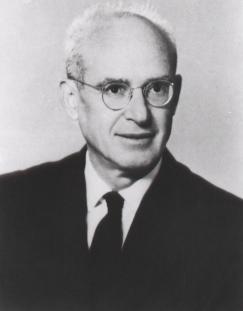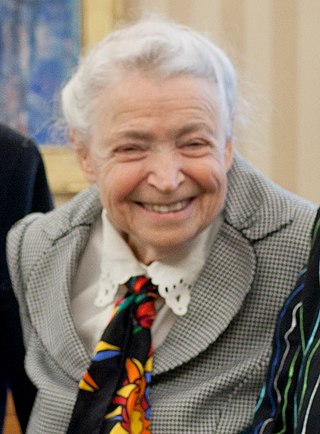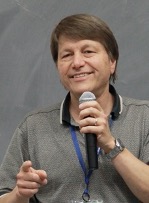
Steven Weinberg was an American theoretical physicist and Nobel laureate in physics for his contributions with Abdus Salam and Sheldon Glashow to the unification of the weak force and electromagnetic interaction between elementary particles.

Samuel Chao Chung Ting is an American physicist who, with Burton Richter, received the Nobel Prize in 1976 for discovering the subatomic J/ψ particle.

Kenneth Geddes "Ken" Wilson was an American theoretical physicist and a pioneer in leveraging computers for studying particle physics. He was awarded the 1982 Nobel Prize in Physics for his work on phase transitions—illuminating the subtle essence of phenomena like melting ice and emerging magnetism. It was embodied in his fundamental work on the renormalization group.

Nathan Rosen was an American and Israeli physicist noted for his study on the structure of the hydrogen molecule and his collaboration with Albert Einstein and Boris Podolsky on entangled wave functions and the EPR paradox. He is also remembered for the Einstein–Rosen bridge, the first known kind of wormhole.

Mildred Dresselhaus, known as the "Queen of Carbon Science", was an American physicist, materials scientist, and nanotechnologist. She was an institute professor and professor of both physics and electrical engineering at the Massachusetts Institute of Technology. She also served as the president of the American Physical Society, the chair of the American Association for the Advancement of Science, as well as the director of science in the US Department of Energy under the Bill Clinton Government. Dresselhaus won numerous awards including the Presidential Medal of Freedom, the National Medal of Science, the Enrico Fermi Award, the Kavli Prize and the Vannevar Bush Award.
David W. Snoke is a physics professor at the University of Pittsburgh in the Department of Physics and Astronomy. In 2006 he was elected a Fellow of the American Physical Society "for his pioneering work on the experimental and theoretical understanding of dynamical optical processes in semiconductor systems." In 2004 he co-wrote a controversial paper with prominent intelligent design proponent Michael Behe. In 2007, his research group was the first to report Bose-Einstein condensation of polaritons in a trap. David Snoke and theoretical physicist Jonathan Keeling recently published an article announcing a new era for polariton condensates saying that polaritons are arguably the "...best hope for harnessing the strange effects of quantum condensation and superfluidity in everyday applications."
Mitsutaka Fujita was a Japanese physicist. He proposed the edge state that is unique to graphene zigzag edges. Also, he theoretically pointed out the importance and peculiarity of nanoscale and edge shape effects in nanographene. The theoretical concept of graphene nanoribbons was introduced by him and his research group to study the nanoscale effect of graphene. He was an associate professor at Tsukuba University, and died of a subarachnoid hemorrhage on March 18, 1998. His posthumous name is Rikakuin-Shinju-Houkou-Koji (理覚院深珠放光居士) in Japanese.

Kam-Biu Luk is a professor of physics, with a focus on particle physics, at UC Berkeley and a senior faculty scientist in the Lawrence Berkeley National Laboratory's physics division. Luk has conducted research on neutrino oscillation and CP violation. Luk and his collaborator Yifang Wang were awarded the 2014 Panofsky Prize "for their leadership of the Daya Bay experiment, which produced the first definitive measurement of θ13 angle of the neutrino mixing matrix." His work on neutrino oscillation also received 2016 Breakthrough Prize in Fundamental Physics shared with other teams. He also received a Doctor of Science honoris causa from the Hong Kong University of Science and Technology in 2016. Luk is a fellow of the American Physical Society, and the American Academy of Arts and Sciences.
Electronic entropy is the entropy of a system attributable to electrons' probabilistic occupation of states. This entropy can take a number of forms. The first form can be termed a density of states based entropy. The Fermi–Dirac distribution implies that each eigenstate of a system, i, is occupied with a certain probability, pi. As the entropy is given by a sum over the probabilities of occupation of those states, there is an entropy associated with the occupation of the various electronic states. In most molecular systems, the energy spacing between the highest occupied molecular orbital and the lowest unoccupied molecular orbital is usually large, and thus the probabilities associated with the occupation of the excited states are small. Therefore, the electronic entropy in molecular systems can safely be neglected. Electronic entropy is thus most relevant for the thermodynamics of condensed phases, where the density of states at the Fermi level can be quite large, and the electronic entropy can thus contribute substantially to thermodynamic behavior. A second form of electronic entropy can be attributed to the configurational entropy associated with localized electrons and holes. This entropy is similar in form to the configurational entropy associated with the mixing of atoms on a lattice.
Ramamurti Rajaraman is an emeritus professor of theoretical physics at the School of Physical Sciences at Jawaharlal Nehru University. He was also the co-Chairman of the International Panel on Fissile Materials and a member of the Bulletin of the Atomic Scientists' Science and Security Board. He has taught and conducted research in physics at the Indian Institute of Science, the Institute for Advanced Study at Princeton, and as a visiting professor at Stanford, Harvard, MIT, and elsewhere. He received his doctorate in theoretical physics in 1963 from Cornell University. In addition to his physics publications, Rajaraman has written widely on topics including fissile material production in India and Pakistan and the radiological effects of nuclear weapon accidents.

David Tománek (born July 1954) is a U.S.-Swiss physicist of Czech origin and researcher in nanoscience and nanotechnology. He is Emeritus Professor of Physics at Michigan State University. He is known for predicting the structure and calculating properties of surfaces, atomic clusters including the C60 buckminsterfullerene, nanotubes, nanowires and nanohelices, graphene, and two-dimensional materials including phosphorene.
Laura M. Roth is an American solid state physicist, and an American Physical Society Fellow.

Mark Owen Robbins was an American condensed matter physicist who specialized in computational studies of friction, fracture and adhesion, with a particular focus on nanotribology, contact mechanics, and polymers. He was a professor in the department of physics and astronomy at Johns Hopkins University at the time of his death.

Amnon Aharony is an Israeli Professor (Emeritus) of Physics in the School of Physics and Astronomy at Tel Aviv University, Israel and in the Physics Department of Ben Gurion University of the Negev, Israel. After years of research on statistical physics, his current research focuses on condensed matter theory, especially in mesoscopic physics and spintronics. He is a member of the Israel Academy of Sciences and Humanities, a Foreign Honorary Member of the American Academy of Arts and Sciences and of several other academies. He also received several prizes, including the Rothschild Prize in Physical Sciences, and the Gunnar Randers Research Prize, awarded every other year by the King of Norway.
Tin-Lun "Jason" Ho is a Chinese-American theoretical physicist, specializing in condensed matter theory, quantum gases, and Bose-Einstein condensates. He is known for the Mermin-Ho relation.
Robert Otto Pohl is a German-American physicist, specializing in condensed matter physics topics such as solid state physics, thermal conductivity, and thin films, who is the Goldwin Smith Emeritus Professor of Physics at Cornell University where he has been on the faculty since the 1950s.
Blayne Ryan Heckel is an American experimental physicist, known for his research involving precision measurements in atomic physics and gravitational physics. He is now a professor emeritus at the University of Washington in Seattle.
Gene Frederick Dresselhaus was an American condensed matter physicist. He is known as a pioneer of spintronics and for his 1955 discovery of the eponymous Dresselhaus effect.
Alvin Boyd Cardwell was an American experimental physicist, specializing in "thermionic and photoelectric emission of electrons from crystalline metals."
James Murle Cork was an American physicist, known for his research in nuclear physics and nuclear spectroscopy.








